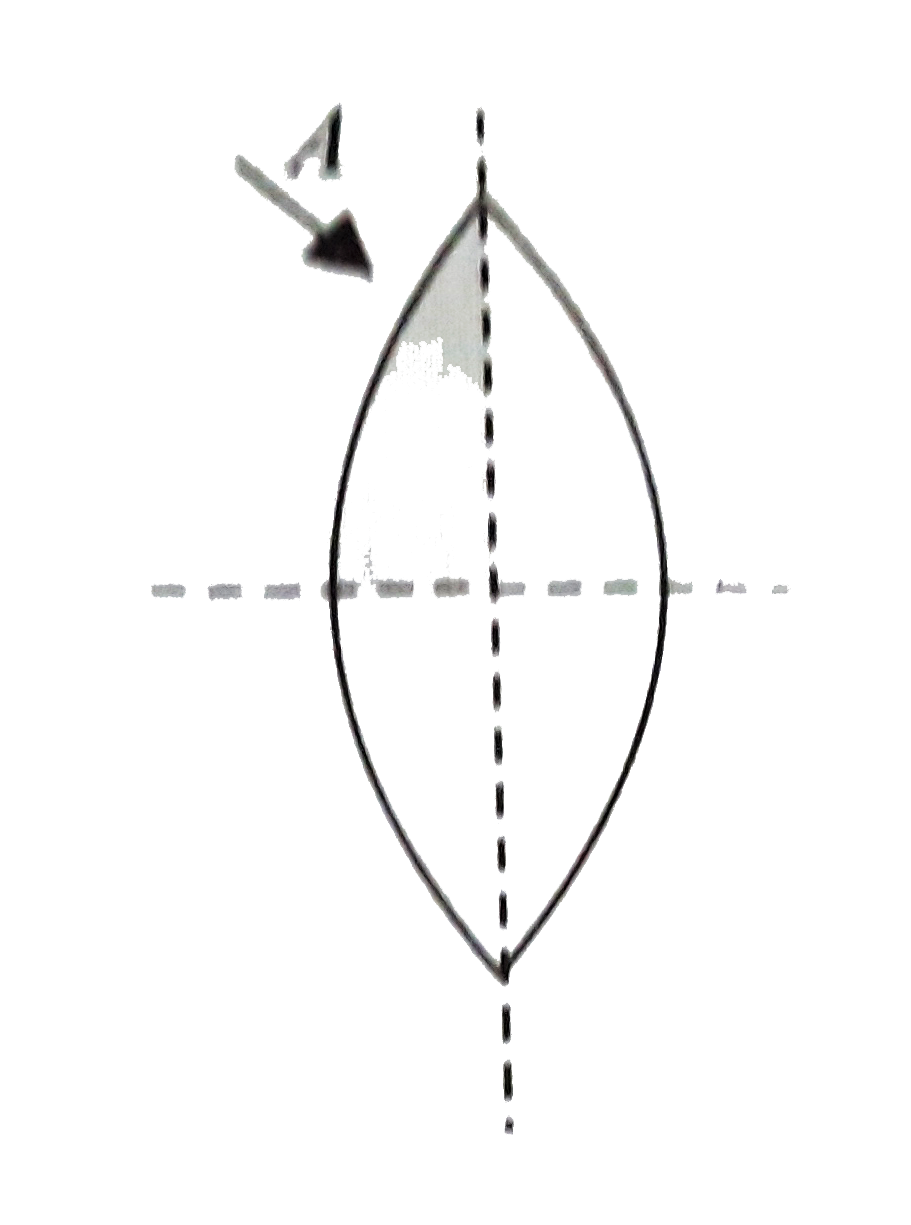The focal length of a normal eye lens is about
1 mm
2 cm
25 cm
1 m
The correct Answer is:B
To determine the focal length of a normal eye lens, we can follow these steps:
1. Understanding the Normal Eye Lens:
- The term "normal eye lens" refers to the eye lens when it is in a relaxed state. This means that the eye muscles are not exerting any force to change the shape of the lens.
2. Condition for Relaxation:
- In this relaxed position, the eye is capable of focusing on distant objects, which are considered to be at infinity. When viewing objects at infinity, the eye lens does not need to accommodate (change shape) to focus the light.
3. Focal Length Definition:
- The focal length of a lens is the distance from the lens to the point where parallel rays of light converge (the focus). For the human eye, this is the distance from the eye lens to the retina.
4. Distance from Eye Lens to Retina:
- In a normal human eye, when relaxed, the distance from the eye lens to the retina is approximately 2 cm. This distance effectively represents the focal length of the eye lens in this relaxed state.
5. Conclusion:
- Therefore, the focal length of a normal eye lens is about 2 cm.
Final Answer:
The focal length of a normal eye lens is approximately 2 cm.
---
- The term "normal eye lens" refers to the eye lens when it is in a relaxed state. This means that the eye muscles are not exerting any force to change the shape of the lens.
- In this relaxed position, the eye is capable of focusing on distant objects, which are considered to be at infinity. When viewing objects at infinity, the eye lens does not need to accommodate (change shape) to focus the light.
- The focal length of a lens is the distance from the lens to the point where parallel rays of light converge (the focus). For the human eye, this is the distance from the eye lens to the retina.
- In a normal human eye, when relaxed, the distance from the eye lens to the retina is approximately 2 cm. This distance effectively represents the focal length of the eye lens in this relaxed state.
- Therefore, the focal length of a normal eye lens is about 2 cm.
The focal length of a normal eye lens is approximately 2 cm.
Topper's Solved these Questions
- RAY OPTICSBOOK - DC PANDEY ENGLISHCHAPTER - RAY OPTICSEXERCISE - Checkpoint 9.7
10 Videos
- RAY OPTICSBOOK - DC PANDEY ENGLISHCHAPTER - RAY OPTICSEXERCISE - Exercise
170 Videos
- RAY OPTICSBOOK - DC PANDEY ENGLISHCHAPTER - RAY OPTICSEXERCISE - Checkpoint 9.5
10 Videos
- NUCLEIBOOK - DC PANDEY ENGLISHCHAPTER - NUCLEIEXERCISE - C MADICAL ENTRANCES GALLERY
46 Videos
- REFLECTION OF LIGHTBOOK - DC PANDEY ENGLISHCHAPTER - REFLECTION OF LIGHTEXERCISE - Subjective
9 Videos
Similar Questions
A change in the focal length of the eye lens is brought by.
View SolutionThe change in focal length of an eye lens is caused by the action of the
View SolutionThe focal length of a plano-concave lens is -10 cm , then its focal length when its palne surface is polished is
View SolutionThe human eye can focus objects at different distances by adjusting the focal length of the eye lens. This is due to
View SolutionThe focal length of the eye lens increases when eye muscles
View SolutionIn a compound microscope , the magnificent virtual image is found at a distance of 25 cm from the eye-piece . The focal length of its objective lens is 1 cm. If the microspore is 20 cm , then the focal length of the eye-piece lens ( in cm) is .................
View SolutionA convex lens of focal length f cut into parts first horizontally and then vertically. Find the focal length of part A of the lens, as shown:

View SolutionThe focal length of the objective lens of a compound microscope is
View SolutionThe focal length of objective and eye lens of a microscope are 4cm and 8cm respectively. If the least distance of distinct vision is 24cm and object distance is 4.5cm from the objective lens, then the magnifying power of the microscope will be
View SolutionIn an astronomical telescope, the focal length of the objective lens is 100 cm and of eye-piece is 2 cm . The magnifying power of the telescope for the normal eye is
View Solution
